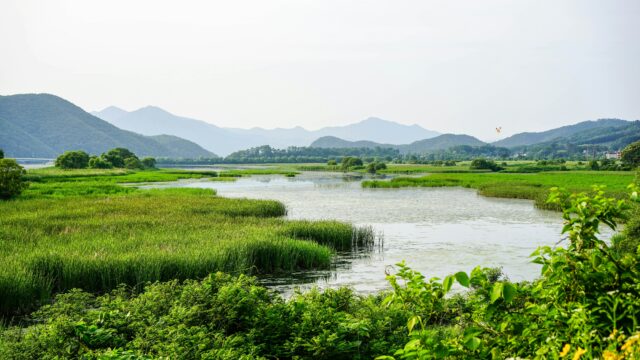From drops to dollars: what about the right to water?
If we are thinking about water in the context of a ‘green economy’, then, like other ‘resources’ it would be treated as a natural capital and an economic asset. And if we take the ‘green economy’ approach to its logical conclusion, it will likely create and further establish water trading markets, similar to existing ones based on carbon but inclusive of the services and functions of water as well as the resource itself.
The introduction of water trading markets has significant implications for world geo-politics, as seen when the Canadian hedge fund, Sextant, reportedly bought 95-year water rights to three glaciers in northern Europe. According to the hedge fund, one glacier will be used to create bottled water and the other two will provide bulk water transported to customers in 24,000 litres containers or super tankers. This type of trading—especially by speculators and water-stressed countries/governments—begs the question of whether this system will reverse ecosystem destruction or will cause more harm to the planet and its people.
This spells disaster for the poor and marginalized people of the world, who are struggling to make ends meet on a daily basis.
Does the 'valuation' of natural resources always lead to ‘marketization’?
The current approach to ‘valuation’ as expressed by the GE is to quantify and monetize nature - this means putting a price on the intrinsic values of nature. From there comes the selling of chunks of nature and entering them into markets – as has been done with carbon. Therefore, ‘valuing’ water and integrating it into development and business practices would definitely mean marketization. In fact, Craig Donahue, the chief executive of the Chicago Mercantile Exchange, mentioned in a news report that the concept of a global future market in water is not surprising and claimed that the “products are already being developed.” This means that specialized water-targeted investment funds (exchange traded water funds, hedge funds, water certificates) are already being offered by major investment banks in the stock markets.
So what’s the alternative?
The practice of public and community allocation and management of water services and resources has already created alternative models. These alternatives offer new paths for protecting water and providing viable, pro-poor and ecologically sustainable options for the world’s populations – especially those that lack or have no access to water and environmental protection. One such option is Public-Public Partnerships (PuPs), which are not-for-profit, mutually beneficial partnerships between public sector water operators, local communities, trade unions and NGOs.
As opposed to public-private partnerships (PPPs), PuPs offer an innovative and practical way of sharing the expertise of public water managers from Southern and Northern utilities to spread good practices and ideas in water management, including: how to secure water delivery to urban poor communities; respecting workers’ rights and adopting core labour standards; allowing consumers to participate in the determination of water rates; and providing the social and political support needed for such forms of mutual cooperation in the process.
Just one example comes from Thailand¹ where the competing demands of households, agriculture, tourism and industry for water have led different interest groups along the Ping River to negotiate with one another. For this, the Ping River Basin Committee brought together the various water users to establish an inclusive decision making process. As such, the end result saw a solution that was ecologically sustainable, equitable and mutually agreed upon.
However, there is no ‘one-size-fits-all’ option – but PuPs have been proven to be pro-poor and ecologically sustainable. They have also shown that they can produce practical and workable solutions that do not rely on market mechanisms or the profit-driven corporate private sector. As such, there are options and examples which show that water justice—ensuring that all communities, especially the poor and marginalized have equal and equitable access to safe, affordable and sustainable water use for various purposes such as drinking, fishing, recreational and cultural uses—is possible in practice.
Mary Ann Manahan, Research Associate with Focus on the Global South, Philippines Programme
1. Dargantes, B. B., Manahan, M, and Batistel, C., Springs of Hope: Alternatives to Commercialization of Water Resources and Services in Asia, in Alternatives to Privatization Public Options for Essential Services in the Global South, David A. McDonald and Greg Ruiters (eds.), Routledge: Routledge Studies in Development and Society series, 2012.


